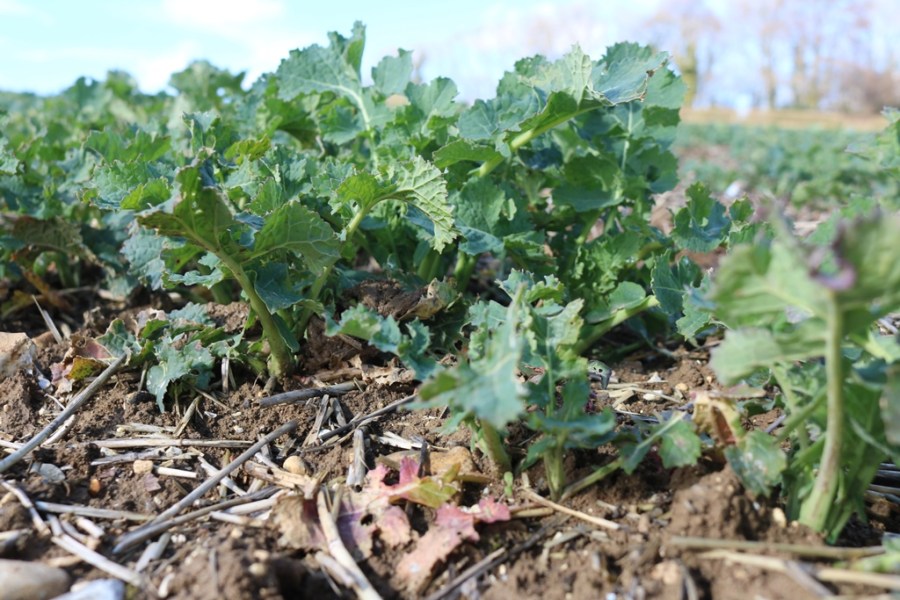With Clearfield oilseed rape now a mainstream choice for growers, CPM visits a field in Hants where charlock problems had precluded any other options.
By Tom Allen-Stevens
More than 10% of oilseed rape varieties harvested this year will be Clearfield hybrids, according to figures released by BASF and Dekalb. The area grown to the varieties, which have resistance bred in to the herbicide imazamox, has doubled every year since 2014.
“The technology is no longer just used by early adopters – it’s gone mainstream,” says Dekalb marketing manager Mark Shaw. “The largest uptake has been in the east and south east of England. We’ve seen the West Midlands gather momentum this year, although the varieties have been used less in Scotland.”

Clearfield has gone mainstream, says Mark Shaw.
Clearfield OSR varieties were introduced to the market in 2012. The genes conferring tolerance to imidazolinone herbicides were discovered by BASF who developed the trait and passed on the toolkit to breeders to bring into commercial lines in 1992. They can be oversprayed with the broad-spectrum post-emergence broadleaf weed herbicides Cleranda (imazamox+ metazachlor) and Cleravo (imazamox+ quinmerac).
There’s now over 60,000ha of the varieties grown in the UK, according to the Kleffman Group annual seed survey of 400 growers. “One interesting statistic is the proportion of farms growing only Clearfield varieties – this has doubled between 2017 and 2018. Those who try it once stick with Clearfield and increase the area they grow.”
Uptake of the trait was slow initially, however. Semi dwarf hybrid DK Imagine CL lagged way behind the AHDB Recommended List leaders on yield when it was launched in 2012. “DK Imiron CL added pod shatter and double phoma resistance, then DK Impression CL was the first standard height variety, with real progress in fast growth during autumn and spring,” recalls Dekalb technical specialist Will Vaughan-France.
“But DK Imperial CL has been the real breakthrough for us. It ticks a lot of boxes and looks much more like a variety growers would choose to grow, comparing well with DK Exalte.” This one variety accounts for more than half of the Clearfield area.
The benefit for growers is the ability to control broadleaf weeds without having to rely on pre-emergence herbicides, says BASF’s Clare Tucker. “Typically you’d apply the herbicide in Sept or Oct when the weed is at 1-4 true leaves. Cleranda provides extra residual activity against later germinators. The quinmerac in Cleravo is a good residual active on cleavers and poppies and can be used in a programme with pre-em metazachlor.”
The weed spectrum is impressive, taking out brassica weeds, such as charlock and runch, dead-nettle, cranes bill, cleavers and poppies, as well as some activity on grasses (though not blackgrass). “It takes a lot of the gamble out of establishing OSR – you’ll actually know the plant count you’ll get to,” says Clare.
Problem fields
This is backed up by Ben Burrows, agronomist with Crop Management Partners in Oxon, Hants Wilts and Berks. “Generally our growers haven’t made a total switch, but targeted problem fields, where severe charlock and runch would otherwise make OSR unviable. By the time the frost or the bifenox has controlled these weeds, there’s not much of a crop left.”
It was a charlock problem in 2013 that persuaded farm manager Michael Maxwell of Preston Farms near Preston Candover in Hants never to put OSR in one particular field again. But 27ha of the farm’s 162ha OSR crop has been planted with DK Imperial CL this year.
“It was late sown in mid Sept due to difficulties harvesting the previous crop, and the seedbed conditions were variable, but the crop coped well.”
Sown at 45 seeds/m², the target plant count was 25-30/m², and while cabbage-stem flea beetle wasn’t a problem, slugs have been persistent. “We put 165kg/ha of DAP into the seedbed and the headland received Springbok (dimethenamid-p+ metazachlor) mainly for cranes bill. It looks fine now,” reports Michael.
Cleravo was applied with the recommended adjuvant Dash in late Oct with the phoma spray. This followed an early Oct application of Falcon (propaquizafop) for volunteers and came before a late Nov Kerb (propyzamide) applied with Refinzar (penthiopyrad+ picoxystrobin) for light leaf spot.
“Despite some testing conditions, the crop has come through well, and it’s clear of weeds. We’ve ear-marked another bad field we’ll be putting into a Clearfield variety next year,” he says.




